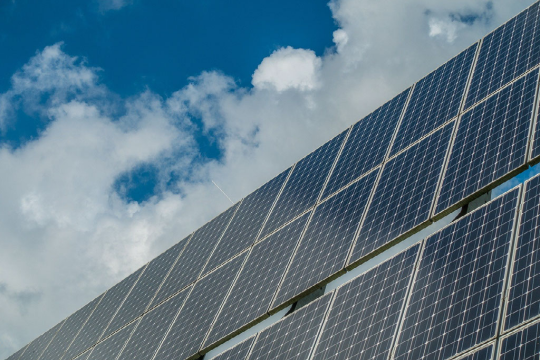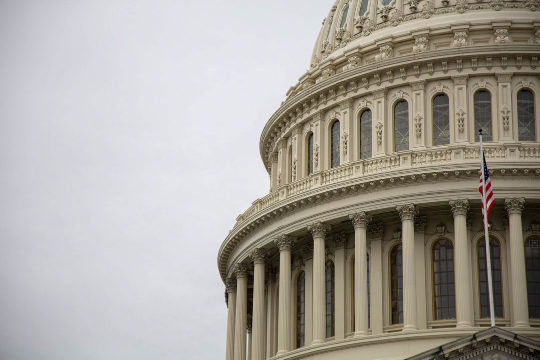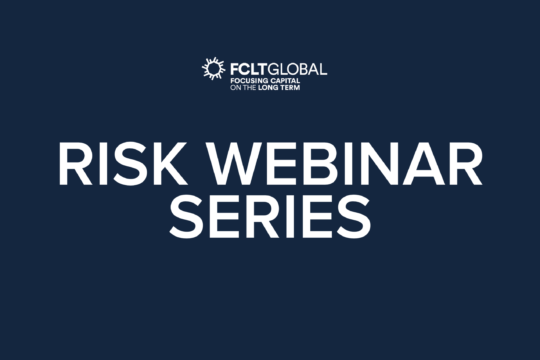FCLTGlobal hosts business leaders and institutional investors to discuss how to position the food and agriculture industry for a more sustainable future.
As we collectively work towards a lower carbon future, a key component of reducing emissions will be the transition of carbon-intensive industries to more sustainable business models. Foundational transformation, in particular change that requires upfront investment before realizing returns, can be difficult for business leaders faced with short-term pressures. Long-term investors are critical partners in supporting a sustainable transition, and engagement is a key tool for building alignment.
On 12 April, representatives from Impossible Foods, Syngenta, Temasek, Nuveen, and McKinsey & Company joined Investing in the Sustainable Food & Agriculture Transition, a webinar to discuss the opportunities ahead to position the food and agriculture industry for a more sustainable future.
Discussion Leaders
| Martin Davies President and CEO Westchester Group Investment Management, Nuveen |
Nick Halla SVP, International Impossible Foods |
Chen Lichtenstein CFO, Syngenta |
| Audrey Lucas Senior Partner, McKinsey & Company |
John Vaske Head of Americas, Head of Agribusiness, Temasek |
As the world’s population approaches ten billion people later this century, two critical tensions face the agricultural system: a clear need to significantly upscale food production to meet the demand, and the need to support this demand in a more sustainable way. Both investors and food producers themselves have critical roles to play in finding solutions, and making considerable investments in agricultural innovation is required from both sides.
Syngenta, for example, has committed $2 billion over the next five years to this effort.
“Over the last seven decades, the world has been producing four times more food and feed than we used to and at the same time we’ve been reducing use of chemicals,” said Chen Lichtenstein, Chief Financial Officer of Syngenta Group. “If we are not applying modern crop protection technologies, we would see yields dropping by about 60-70%. So, there’s no way to sustain the world as it is today without the activities that have happened.”
Likewise, Impossible Foods has essentially pioneered a new category in the sustainable food space. Doing so required striking a balance between sizeable long-term investments in R&D and the near-term revenue needed to build the brand at the outset.
“The first two years we didn’t even work on products – we worked on technology. We worked on understanding what actually makes meat, fish, and dairy foods taste so good. Growth and impact come together because every time a consumer has impossible it’s a direct impact and a direct reduction in the environmental footprint of our food system,” said Nick Halla, SVP, International of Impossible Foods.
The new landscape in the food and agriculture industry, and the potential for innovation, breeds plenty of new opportunities for long-term oriented businesses. The dilemma is often bringing those opportunities to scale and taking on considerable risk.
“Based on the challenge that we have as a society, it’s important that we identify and scale these innovations much more rapidly – we don’t have a decade in all cases,” said McKinsey & Company’s Audrey Lucas. “The economic returns of these investments may not always be as attractive as others. Often there’s increased cost that is not always offset by demand, and there are supply chain challenges, especially in developing markets. There can be a lack of infrastructure that can limit development.”
“We’re going to need help. We’re going to need institutional investors with a longer-term horizon. We’re going to need a collaboration between public and private sectors,” Lucas continued.
Developing a more climate-resilient food and agriculture ecosystem will require collaboration between business and the investor community. How investors evaluate companies in the midst of a transition to more sustainable operations is an important aspect of the collaboration. Many investors have already ingrained sustainability considerations into their process.
“We have had sustainability at the core of everything we do across all of our industry sectors and industry verticals,” said John Vaske, Temasek’s Head of Americas and Head of Agribusiness. “We don’t necessarily think about the ‘short-term vs. long-term’ conundrum. What we’ve done in recent years is go in earlier when we see an addressable market that has huge potential. We see a strong management team and we see good bones of a company that could affect the kinds of transition and change that we’re talking about.”
For investors surveying the food and agriculture landscape, it’s critical to evaluate businesses in sectors that will bring the appropriate returns and acceptable levels of volatility. That can range considerably depending on where you look.
“The characteristics of investing in a food & beverage business are massively different to investing in farmland. If the investor is looking for a core low volatility investment, I would say farmland or indeed timberland would be a fantastic opportunity,“ said Martin Davies, President and CEO of Westchester Group Investment Management, an investment specialist of Nuveen that acquires, manages, and markets agricultural real estate assets around the world.
These insights bring in both the investor and corporate perspectives and compel us to think critically about how we can drive long-term capital at scale into sustainability solutions. Those are the innovations and transitions that really affect the climate.
As this work progresses, we’d like to understand how much the market is valuing climate-friendly investments and how that translates to financing costs for companies that undertake efforts to transition to a green economy. From an investor perspective, we plan to explore the most effective ways to operationalize net zero portfolios, and how to develop new markets or vehicles to channel liquid assets at scale into climate solutions.
We will continue our discussion on financing sustainable transitions on 19 May, with a webinar panel on Financing the Sustainable Infrastructure Transition. We welcome any comments and suggestions on these critical issues – to contact our team, email [email protected].

Climate | Article
2 March 2021 - Focusing capital on long-term climate solutions via investment portfolio construction

Climate | Article
20 July 2020 - The US Department of Labor proposed new regulatory guideposts for fiduciaries in light of recent trends in ESG investing. Read FCLTGlobal's full comment letter.

Risk and Resilience, Climate | Video
11 November 2020 - Climate change is the largest systemic risk in the view of many long-term investors, and investors are pioneering ways to address this risk, including work to apply existing risk statistics specifically to climate projection and to pioneer new estimates. Projections like these about the impact of climate change on investment performance would represent enormous progress because they would advance beyond general uncertainty and instead make climate change a specific component of risk management.